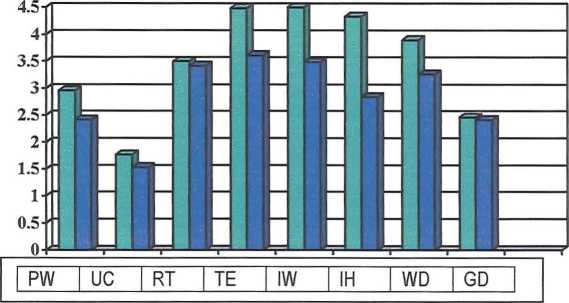144
Figure 4.3.15: Comparison between 5th grade teachers and their pupils; perceptions of
deployment

□ Teachers (Sth)
□ 5th graders
PW = Practical work, UC = Using a ∞mputer, RT= Reading a textbook, TE = Teacher explanation,
IW = Individual work. IH = Individual helo. WD = Whole-class discussion. GD = Grouo discussion
Summary
The results of this analysis show that 5th grade teachers were likely to have stronger
perceptions than their pupils of the frequency of the deployment of some teaching
methods and the extent to which these teaching methods promoted positive attitudes. 5th
grade teachers were more likely to perceive that Practical work, Teacher explanation,
Individual work, Individual help and Whole-class discussion were deployed in their
mathematics classes more than their pupils and that these teaching methods except for
Teacher explanation promoted pupils’ positive affective attitudes towards mathematics
learning more than their pupils.
4.3.4: Comparison of perceptions between 8th grade teachers and their pupils
Enjoyment
Table 4.3.20 and Figure 4.3.16 show that 8th grade teachers were more likely than their
pupils to perceive that Practical work, Individual help and Whole-class discussion
promoted enjoyment with an effect size greater than .5. As with 5th graders, only
Teacher explanation and Reading a textbook were perceived to promote enjoyment
more by pupils than teachers, although these differences were very small.
144
More intriguing information
1. The Demand for Specialty-Crop Insurance: Adverse Selection and Moral Hazard2. From music student to professional: the process of transition
3. Stakeholder Activism, Managerial Entrenchment, and the Congruence of Interests between Shareholders and Stakeholders
4. Literary criticism as such can perhaps be called the art of rereading.
5. The name is absent
6. The name is absent
7. The voluntary welfare associations in Germany: An overview
8. The name is absent
9. The Role of State Trading Enterprises and Their Impact on Agricultural Development and Economic Growth in Developing Countries
10. The name is absent